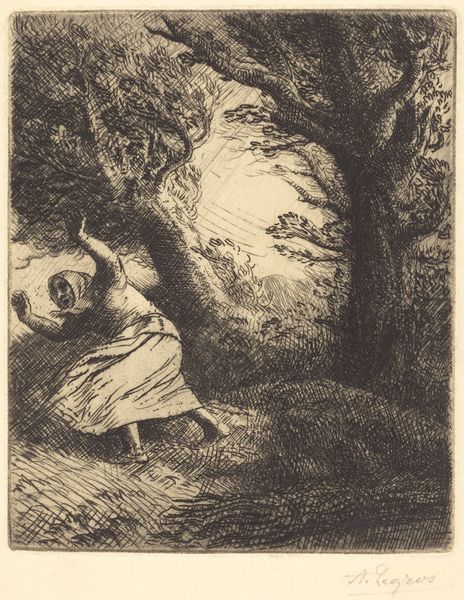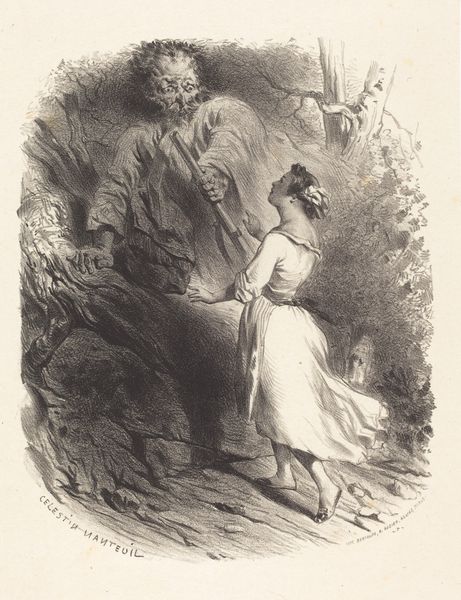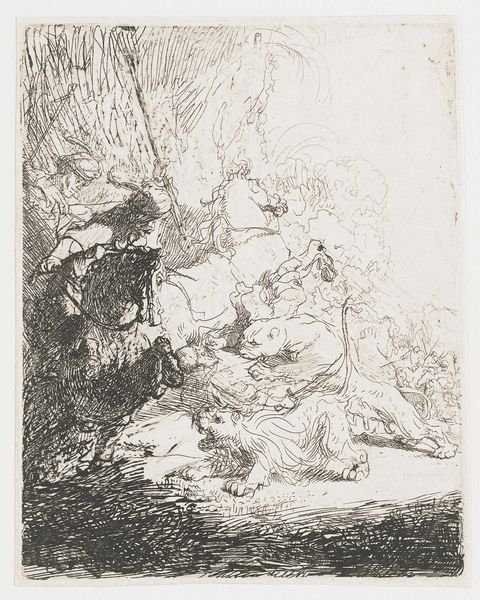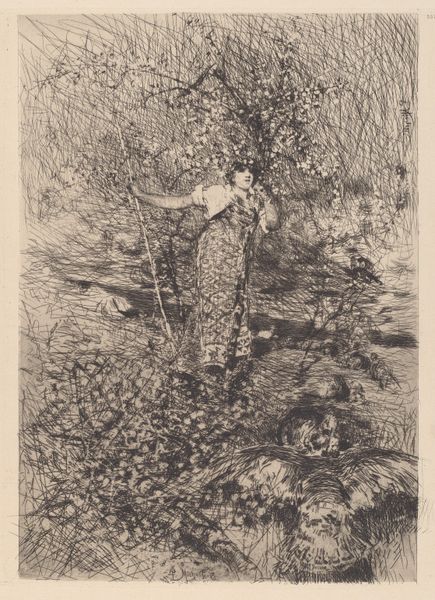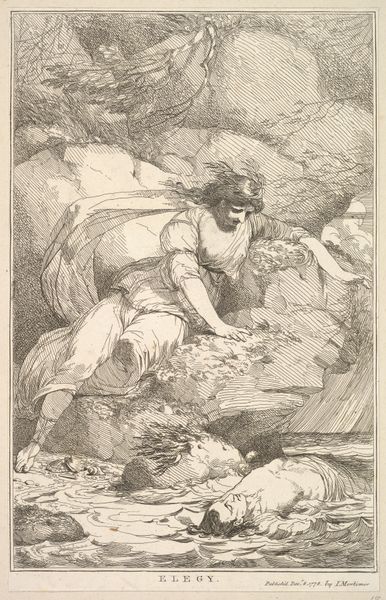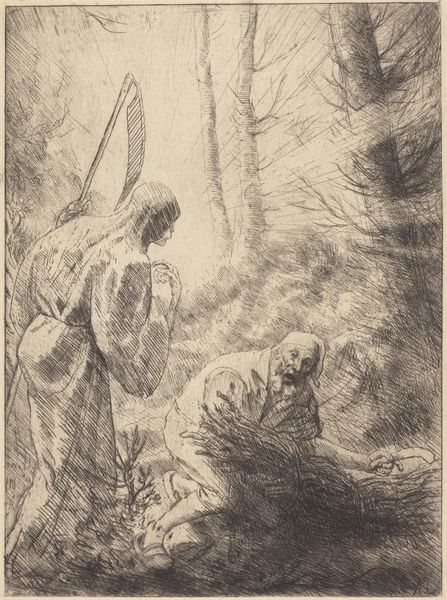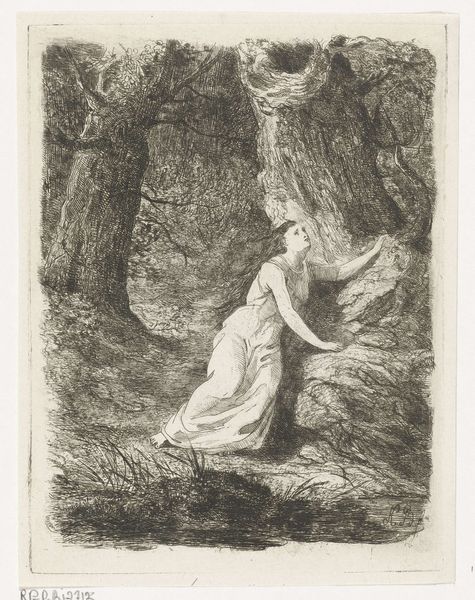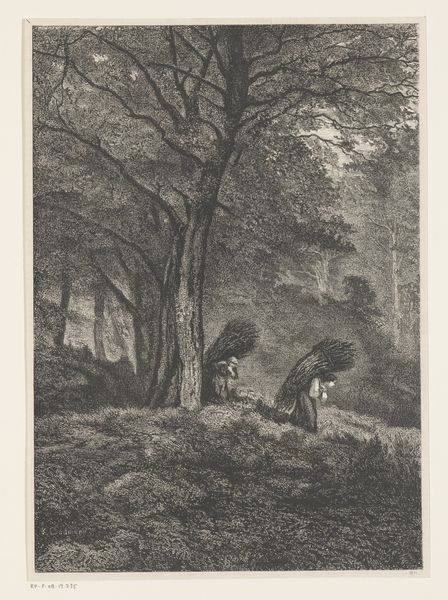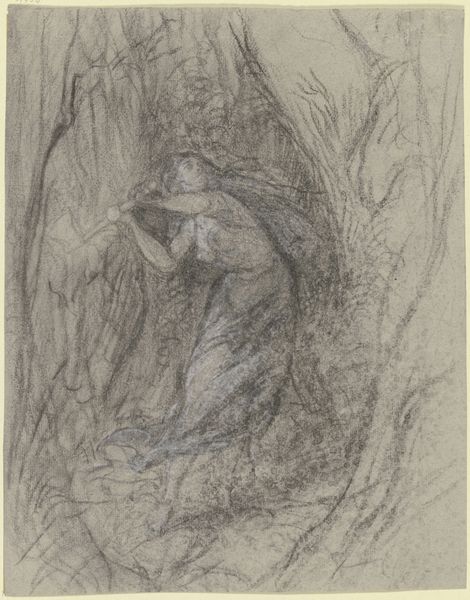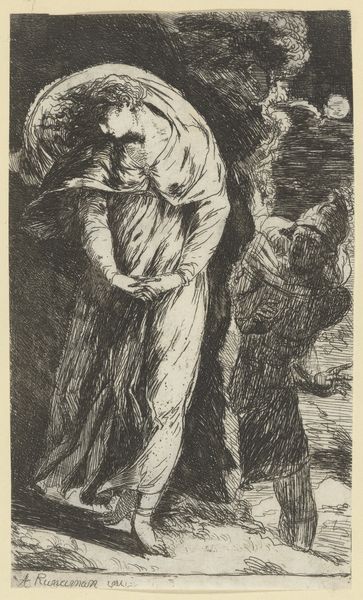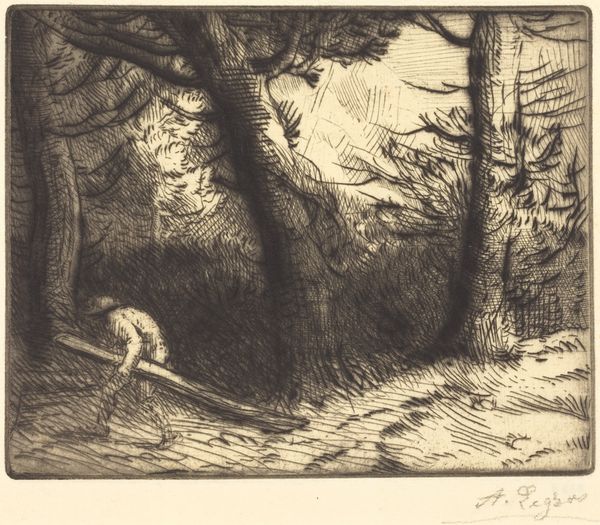
print, etching, engraving
# print
#
etching
#
old engraving style
#
landscape
#
figuration
#
romanticism
#
engraving
Copyright: National Gallery of Art: CC0 1.0
Editor: We're looking at Alphonse Legros’s etching, "Thunder," sometimes called "Un coup de foudre". The swirling lines create an unsettling atmosphere, and there’s a figure fleeing through what seems like a forest. It’s really quite dramatic. How do you interpret this work? Curator: I see a potent intersection of Romanticism and social anxiety. Consider the figure's vulnerability within the overpowering force of nature. Legros created this work at a time of great social upheaval. What does this depiction of a woman running from the 'thunder' – a symbol for social and political instability – tell us about the position of women in society then? How does fear shape identity? Editor: That's interesting, I was so focused on the kind of gothic feel, the drama. Curator: Exactly! Romanticism was often harnessed to grapple with complex social issues. The turbulent landscape echoes the turmoil of the era, maybe even resonating with today’s climate anxiety. Notice the detail in the etching - it is suggestive, implying what it depicts with its textures of fear rather than defining things with detail. Editor: The lack of clarity certainly adds to that feeling. I guess I hadn’t thought about how the ‘thunder’ could represent larger social anxieties. Curator: What does it mean to depict that fear as feminine? Editor: It feels like it makes the danger seem more intimate. Maybe suggesting women are particularly vulnerable. Thank you for this! It definitely gave me another way of looking at the print, beyond the surface drama and connecting art with relevant social topics. Curator: Remember that art can provide insights into cultural narratives, giving us tangible clues on the fears of people within societies across history, encouraging deeper thinking and change.
Comments
No comments
Be the first to comment and join the conversation on the ultimate creative platform.
